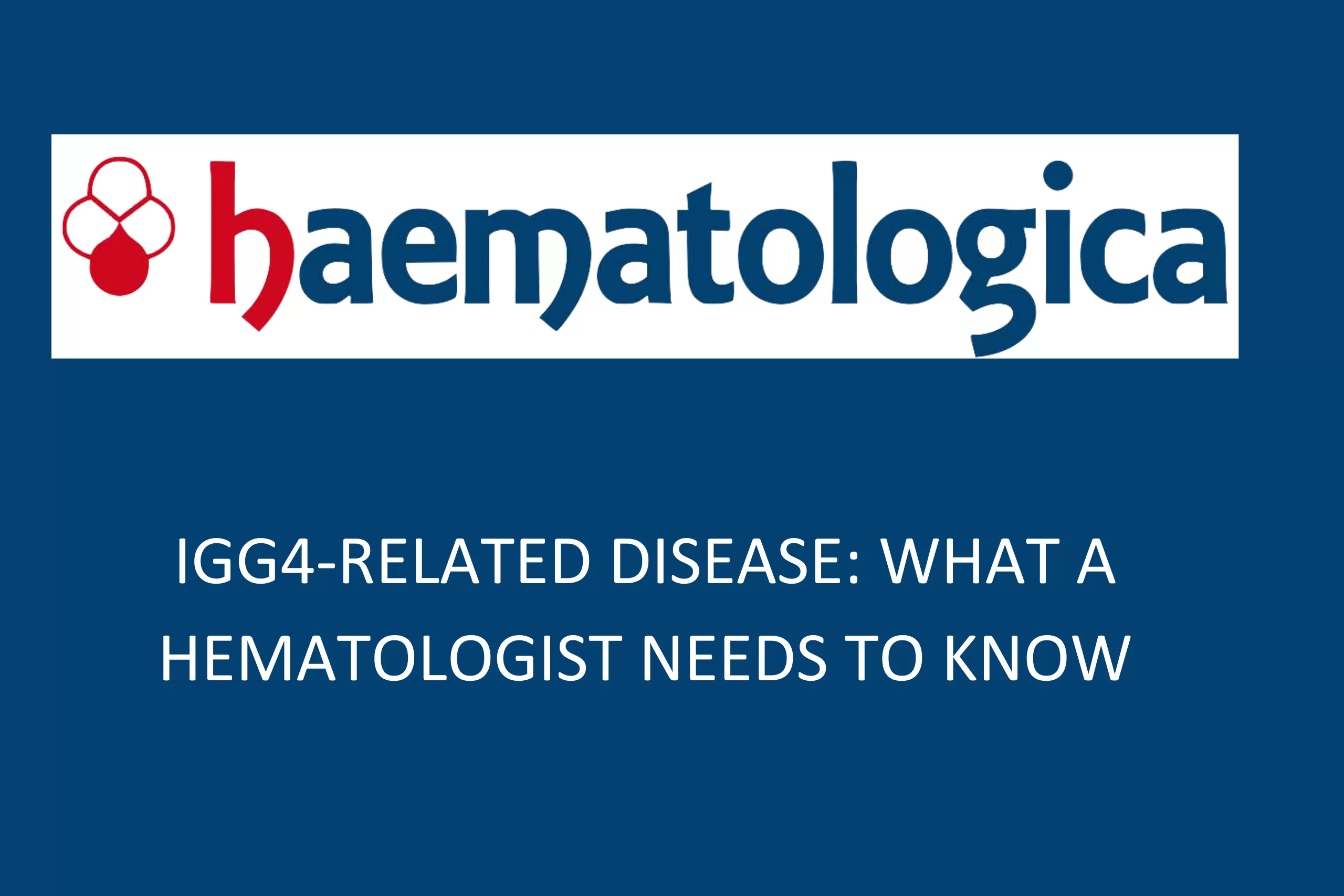Here is a summary of the FULL ARTICLE:
This article is a review aimed at hematologists (blood disease specialists) to help them recognize and understand how IgG4-related disease (IgG4-RD) can appear in blood-related settings. Although IgG4-RD is often thought of as a rheumatology/immunology disease, many of its features overlap with hematologic findings, and it can mimic blood disorders.
Understanding how a rare immune condition can look like a blood disorder
What Is IgG4-Related Disease (IgG4-RD)?
IgG4-related disease is an immune-mediated condition that causes long-lasting inflammation and scarring (fibrosis) in one or more organs.
Although it was first recognized only about two decades ago, doctors now understand that it can affect nearly any part of the body — including the pancreas, kidneys, lungs, glands, and blood vessels.
Because it can mimic infections, cancers, and autoimmune disorders, IgG4-RD is often tricky to identify. Sometimes, the first clues show up in blood or lymph node tests — meaning a hematologist (a blood specialist) might be the first doctor to notice it.
How the Disease Can Show Up in the Blood
1. Enlarged Lymph Nodes (Lymphadenopathy)
Many patients (30–60%) have swollen lymph nodes.
- Sometimes they’re mistaken for lymphoma, because the tissue can look similar under the microscope.
- Biopsy is usually needed to confirm the cause and rule out blood cancers or other immune conditions.
2. High Eosinophil Counts (Eosinophilia)
Around 40% of people with IgG4-RD have increased eosinophils — white blood cells involved in allergies and asthma.
- This may cause mild symptoms like itching or sinus issues.
- The eosinophil levels usually improve with treatment.
3. Elevated Antibody Levels (Polyclonal Hypergammaglobulinemia)
Blood tests often show higher levels of antibodies (immunoglobulins), especially IgG and IgG4.
- On certain lab reports, this can resemble a pattern seen in myeloma (a blood cancer).
- Careful review by specialists helps prevent misdiagnosis.
How Doctors Confirm IgG4-RD
Diagnosing IgG4-RD takes teamwork among specialists — rheumatologists, hematologists, radiologists, and pathologists. Key steps include:
- Blood tests for total IgG and IgG4 levels
- High IgG4 (especially > 5 g/L) supports the diagnosis, but mild elevations can occur in other conditions.
- Biopsy (tissue sample)
- The gold standard.
- Typical features include dense clusters of immune cells, fibrosis with a swirling pattern, and inflammation around veins.
- Imaging (CT, MRI, PET)
- Used to check for organ involvement beyond the obvious symptoms.
Because other conditions — like lymphoma, Castleman disease, or hypereosinophilic syndrome — can look similar, the final diagnosis always combines clinical, lab, and imaging findings.
Treatment and Outlook
Early treatment prevents long-term organ damage.
- Steroids (e.g., prednisone) are the first-line therapy and work quickly in most patients.
- About 90% improve, but relapses are common when steroids are tapered.
- Long-term use can raise blood sugar or cause other side effects.
- Rituximab, a B-cell–targeting biologic drug, has a 95–97% response rate and is now widely used.
- Some patients relapse after 1–2 years, so maintenance therapy or repeat dosing may be needed.
- New treatments — including inebilizumab and obexelimab — are in development to reduce relapses and avoid chronic steroid exposure.
With proper care, most people achieve remission and maintain good organ function.
Red Flags to Discuss With Your Doctor
If you have:
- Swollen lymph nodes that don’t fit the usual patterns
- High IgG4 or total IgG levels on bloodwork
- Repeated “unexplained” inflammation in different organs
- Eosinophilia plus autoimmune-like symptoms
…ask your care team whether IgG4-related disease could be part of the picture.
The Takeaway
IgG4-RD is rare, but highly treatable when recognized early.
Awareness among both patients and hematologists helps prevent unnecessary anxiety about cancer and avoids years of misdiagnosis.
Today, collaboration across specialties — and new targeted therapies — offer real hope for long-term remission and a better quality of life.



